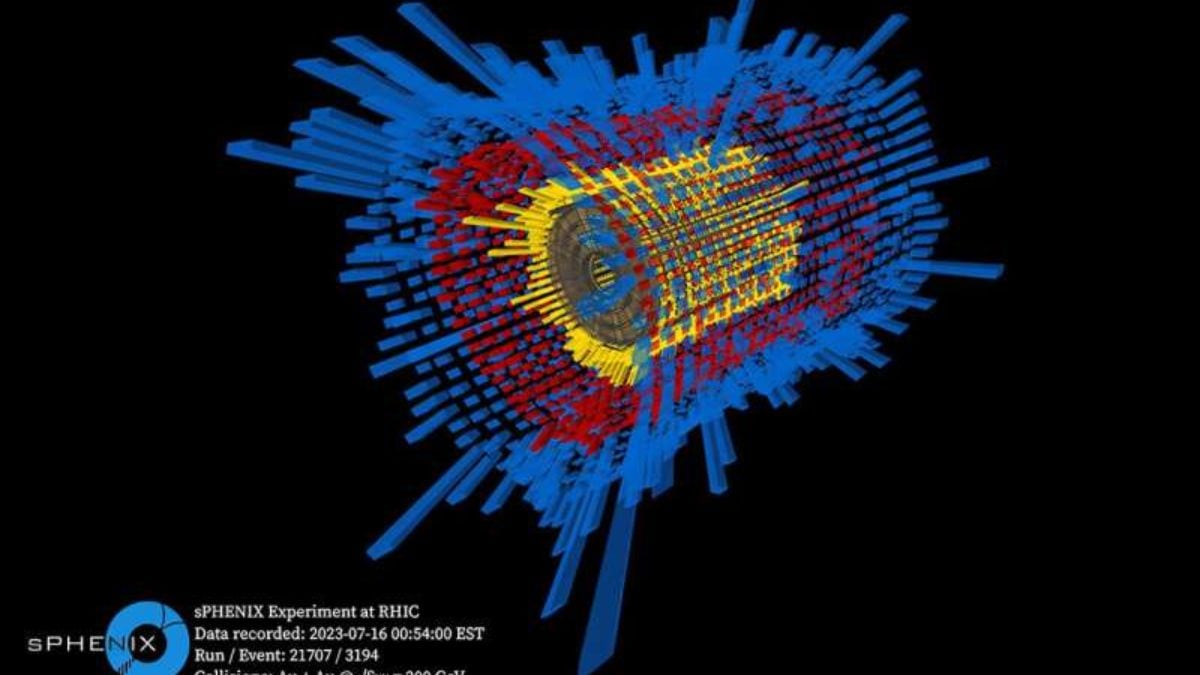

Brookhaven’s sPHENIX detector at the Relativistic Heavy Ion Collider (RHIC) has reported its first physics measurements of gold-ion collisions. Designed for heavy-ion experiments, sPHENIX recorded precision counts of thousands of charged particles and their energies from head-on gold–gold impacts. These early results confirm the detector’s performance and pave the way for its main mission: exploring the quark–gluon plasma (QGP), the hot, dense state of matter thought to have filled the universe microseconds after the Big Bang. By verifying basic collision properties, the experiment lays the foundation for deeper QGP studies.
Probing the Quark–Gluon Plasma
According to two papers, the quark–gluon plasma is an exotic state of matter made of free quarks and gluons that existed microseconds after the Big Bang. Colliding heavy nuclei at RHIC (200 GeV per nucleon) creates a tiny fireball where nuclear matter “melts” into this plasma. sPHENIX was built to probe these extreme conditions. It is essentially an upgrade of Brookhaven’s earlier PHENIX detector.
sPHENIX found that head-on (central) Au+Au collisions produce about ten times more charged particles and energy than glancing (peripheral) collisions. This matches earlier RHIC results and confirms the detector is performing as designed. With this baseline established, researchers will pursue the QGP’s rarest probes – fully reconstructed jets – to study how quarks and gluons lose energy in the plasma.
Implications and Next Steps
RHIC’s final 2025 run of gold-ion collisions will exploit every detector’s capabilities. At the same time, CERN’s LHC collides lead nuclei at much higher energy, and its ALICE/ATLAS/CMS experiments have observed similar QGP effects like jet quenching. The two colliders probe complementary regimes, so sPHENIX’s precise RHIC measurements will enrich the global picture of the plasma.
Next, sPHENIX will treat energetic jets as a microscope on the QGP. By comparing energy loss in heavy-quark vs. light-quark jets, scientists can test whether the plasma is a smooth fluid or contains clumps. As one co-spokesperson notes, the first measurements “establish the basis” for sPHENIX’s QGP program and herald “the start of a very exciting chapter” of discovery.
For the latest tech news and reviews, follow Gadgets 360 on X, Facebook, WhatsApp, Threads and Google News. For the latest videos on gadgets and tech, subscribe to our YouTube channel. If you want to know everything about top influencers, follow our in-house Who’sThat360 on Instagram and YouTube.



